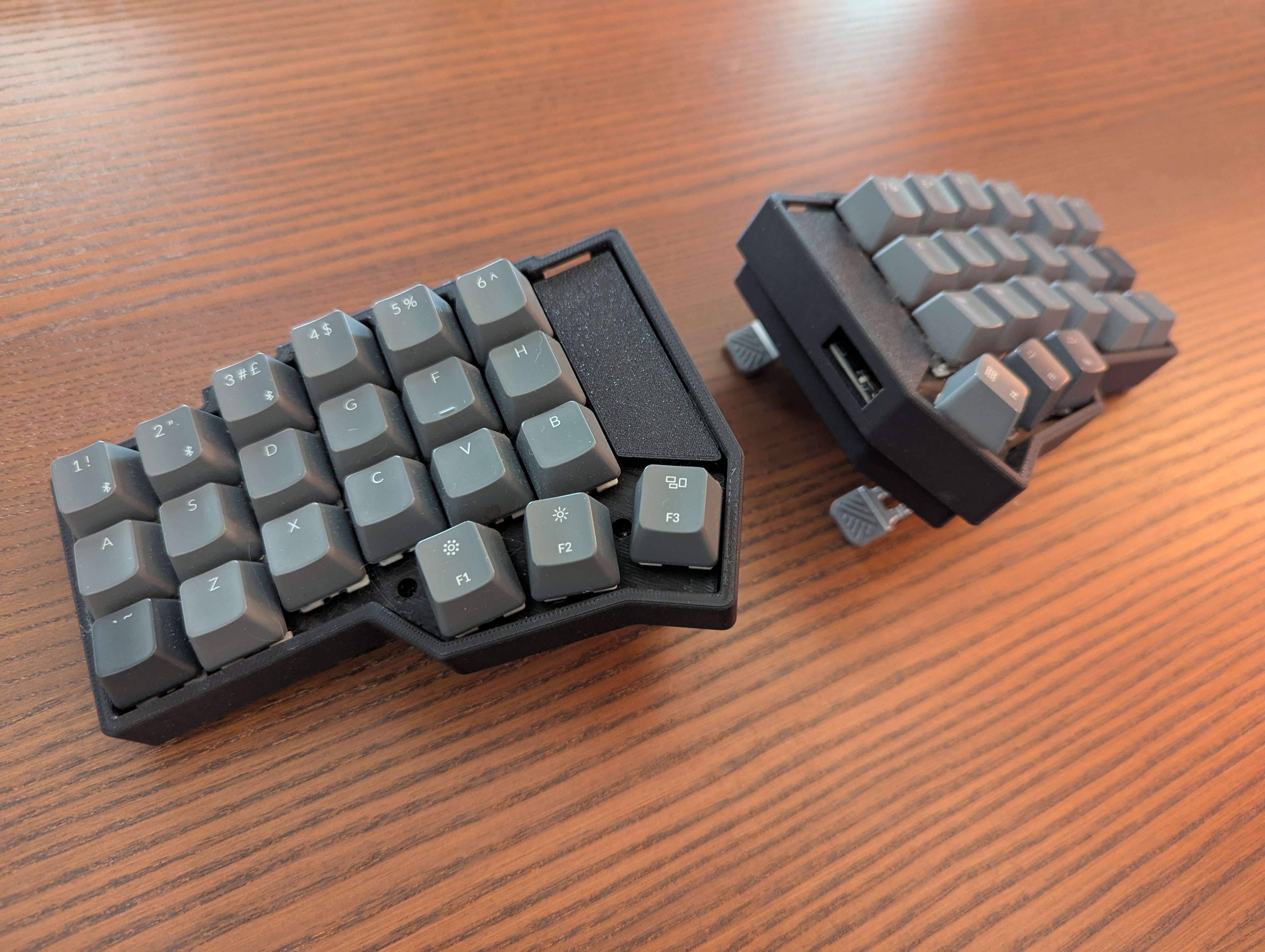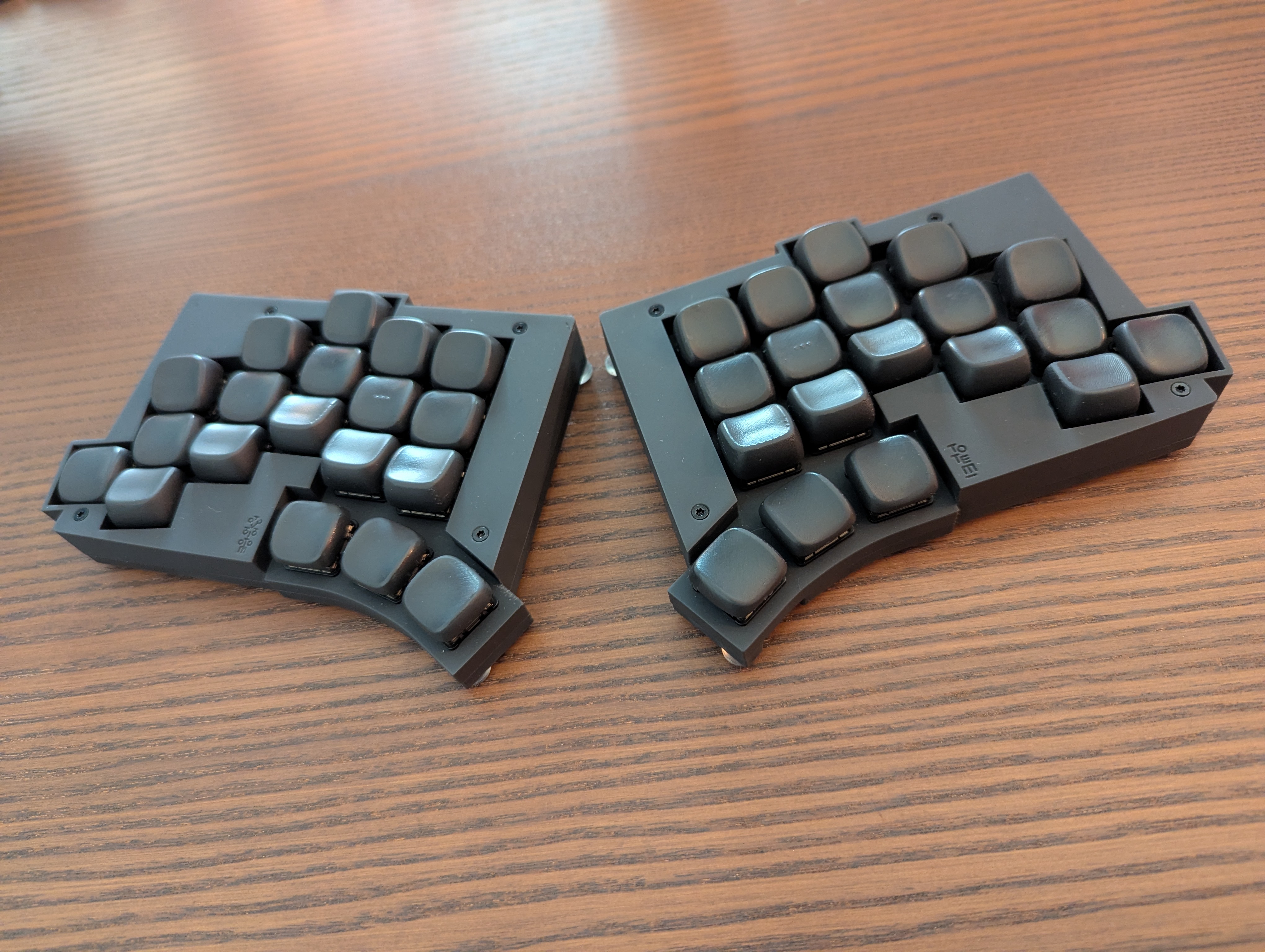5 minutes
Workflow Optimization : Keyboard and Layout
Recently, I’ve been exploring ways to optimize my workflow for greater productivity. The first area I’ll discuss is the keyboard and its layout.
Since the beginning of my career, I’ve looked into alternative keyboard layouts but haven’t committed to using one exclusively. I experimented with the Bépo layout (an alternative French layout), but I didn’t stick with it. I’m French and have always used Azerty, which is not optimized for typing and is even worse for coding. However, I recently decided to pay attention to how I type. I know there’s touch-typing style, but I’ve never learned it. I thought I was an OK typist: what atrocities would I discover …
After paying close attention, I realized that I was typing with three or four fingers on my left hand, and one or two fingers on my right hand ! On top of this, I was often switching my gaze between the keyboard and the screen. Lastly, I was often making mistakes and had to erase and retype words. My hands were also moving around a lot, and it didn’t feel completely comfortable. That was decided, I needed to do something about it.
Not so long ago, a colleague told me about a new keyboard layout he had heard about: Ergo-L. I thought it would be a good time to look into it. I found a layout optimized for French, good for english and excellent for code. Centered around homerow, 1DFH (1 Distance From Home) and touch typing using all 10 fingers. That was my chance : I started to play with it, and it felt comfortable right away. So I started to learn the layout while continuing to use Azerty.
While researching about layouts and Ergo-L, I branched my exploration on the Keyboard itself, the hardware. I found myself going down a rabbit hole (even more so today — More about it at the end of the article). I can’t share everything I found and how interesting it was, but I’ll try to recap some of the key points on which I focused.
In short, I decided to get a Corne split keyboard. First, the split design allows for aligned wrists and forearms to reduce tension, and the possibility to tilt both plates would angle the hands in a more natural position. I’m lucky enough to not have wrist pain yet, but I’ve started to feel slight tension in the recent years, so it’s better to prevent any future issues.

Next, there’s the row staggering. Classic keyboards inherit the row staggering from old typewriter, and I think it really doesn’t make sense to stick with staggered keyboards today. Having started to type with a new layout on both staggered and ortholinear, it really feel more easy and natural to find the keys on the ortholinear keyboard.
Last but not least : Columns staggering. The fact that a row of keys is completely aligned horizontally causes our fingers to stretch in an unnatural way to press the keys, especially the index fingers and pinkies. If we want to push the game a step further, moving each column vertically to adapt to the natural position of the fingers provides a “real” rest position on the home row. Since the Corne, I’ve gotten a second split with even more column staggering and I can say it’s a real pleasure to use.
At this point, I used the split a few times a day, and switched back to classic azerty for daily use. But once I reached around 25 words per minute, I switched completely to split and Ergo-L. And that, is what we can call pain … EVERYTHING feels slow as f**k, and you constantly have the feeling of walking behind a 99-years-old person in a one-person corridor : you just can’t go faster.
But that’s unfortunately a necessary evil. A few weeks of being less productive.
But god, was it worth it ! I got back to my normal speed and productivity, and then I did better than before. I was faster, I was not looking at the keys anymore, I reached average of 98% accuracy in typing (huge drop in mistakes) and found myself using more shortcuts and less of the mouse. I was even able to speak to someone while writing, and it felt more natural to just “use” the keyboard. The “comfort” of typing was real. I was more and more just enjoying doing typing test sessions with loud music : it just flowed.
But then, the rabbit hole hits. The details. The more I’m typing, the more I pay attention to the keys and my fingers. I always preferred to type on MX style keys with large keycaps and heavy switch pressure. However, I unconsciously changed the way I typed toward faster strokes with less pressure. And that’s when I started feeling the need to “build” a keyboard with more personalized keys and switches. I recently moved to a Totem split keyboard with Chocolate Linear switches and KLP Lame keycaps. I bought all the components and soldered/built it from scratch : which was really fun and interesting.

What is the outcome ? More knowledge of what I like, and new ideas to optimize my keyboard … I now understand why people in the 40% keyboard community have a lots of keyboards and talk about “end-game keyboards”. The rabbit hole is true, and the moment you start to make changes to optimize your keyboard, there’s no turning back !
I think the points for the next build I’ll make are :
- Find the correct angle for me and print a custom Alice-type case (angled but one block) at my ideal angle and tilt. Since I find myself always adjusting the 2 halves to a specific angle, it would be better to fix them in this position.
- Go back to MX keys, but with shorter actuation and travel distance, and modded for a lighter touch. I benefit from the lightness and quick actuation of the Choc switches, but prefer larger keycaps.
- Add 2/3 more well-located keys for shortcut optimization (related to the next workflow optimization step)
In the end, I really don’t regret the effort spent learning a new layout or about keyboard ergonomy. I can say this was a success to “optimize” my workflow, and I won’t stop here. Stay tuned for the next steps !
1058 Words
2025-08-21 17:00
